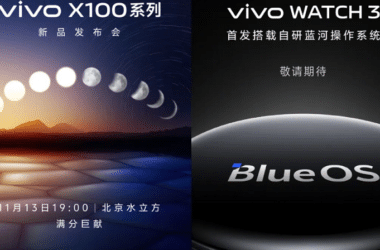Exploring the Latest UPI Regulations: A Boon for Online Banking
The Reserve Bank of India (RBI) has ushered in a wave of new measures and adjustments to the Unified Payments Interface (UPI) that took effect on January 1st, 2024. These regulations have the potential to significantly enhance the online banking and payment experience for millions of users across India. In this article, we delve into the key highlights and implications of these changes.

Big Sale Amazon”
Amazon Sale, Discounted Deals & Offers Alert
and Get Upto 90% Discount on All products
Join Us Today
Understanding the New UPI Rules and Regulations
The recent changes in UPI rules and regulations bring about a host of improvements and innovations in the digital payment landscape. Let’s break down these changes step by step:
1. NPCI’s Directive on Inactive IDs
One of the most crucial changes involves the National Payments Corporation of India (NPCI) directing payment apps like Google Pay and PhonePe to verify and maintain active UPI IDs. After a year of inactivity, these IDs will be deactivated. This move ensures that UPI remains a robust and secure platform for online transactions.
2. Increased Transaction Limits
To cater to the evolving needs of users, the RBI has raised the UPI transaction limit for hospitals and educational institutions. Previously set at Rs 1 lakh, the new limit now stands at Rs 5 lakh. This substantial increase paves the way for more substantial online payments, which is particularly beneficial in the current digital age.
3. Enhanced Security Measures
RBI introduces a 4-hour window for users initiating their first payments over Rs 2,000 to new recipients. This window offers users the option for transaction reversal or modification, enhancing control and security in online transactions. It’s a step towards instilling trust and confidence among users.
4. Interchange Fee for Merchant UPI Transactions
For specific merchant UPI transactions exceeding Rs 2,000 and involving prepaid payment instruments (PPI), such as online wallets, there will now be a 1.1 percent interchange fee. This fee structure aims to streamline the payments ecosystem and ensure fair compensation for all stakeholders.
5. Improved Payment Transparency
Starting immediately, when users make a payment using UPI apps, the actual name of the recipient’s bank account will be displayed on the screen. This added transparency helps users verify the correctness of their transactions, reducing the chances of errors.
6. NPCI’s ‘UPI for Secondary Market’
NPCI’s innovative ‘UPI for Secondary Market’ has entered the Beta phase, allowing limited pilot customers to block funds post-trade confirmation and settle payments on a T1 basis via Clearing Corporations. This development promises more efficient and secure secondary market transactions.
7. Introduction of UPI-ATMs
In collaboration with NPCI, Hitachi Payment Services has launched India’s first UPI-ATM. With plans for nationwide introduction, this innovation enables cash withdrawal through QR code scanning, further expanding the accessibility of UPI services.
The Significance of UPI
The Unified Payments Interface (UPI) is a real-time payment system created by the NPCI, a regulatory body under the RBI. Utilizing the existing IMPS infrastructure, UPI facilitates immediate money transfers between the bank accounts of any two parties. It has revolutionized digital payments in India, making transactions faster, easier, and more convenient.
Recent UPI Statistics
In November 2023, UPI transactions reached a new high in value, totaling Rs 17.4 trillion. This marked a 1.4 percent increase from October 2023’s Rs 17.16 trillion. However, it’s noteworthy that the number of transactions experienced a slight decline, decreasing by 1.5 percent to 11.24 billion compared to the record high of 11.41 billion in the previous month.
Conclusion
The recent regulatory changes introduced by the RBI are set to redefine the online banking and payment experience in India. With increased transaction limits, enhanced security measures, and innovative features like UPI-ATMs, users can look forward to a more convenient and secure digital payment ecosystem. As UPI continues to grow and evolve, it remains a pivotal force in driving India’s digital transformation.
FAQs
1. How do I verify the status of my UPI ID?
You can check the status of your UPI ID through your UPI app, which will indicate whether it is active or inactive.
2. What is the significance of the 4-hour window for new recipients?
The 4-hour window allows users to have greater control over their transactions. If you’ve initiated a payment to a new recipient and notice any errors or issues, you can reverse or modify the transaction within this timeframe.
3. How will the interchange fee affect online wallet transactions?
The interchange fee of 1.1 percent will apply to specific merchant UPI transactions involving prepaid payment instruments (PPI), such as online wallets. It aims to standardize fees within the ecosystem.
4. What is the ‘UPI for Secondary Market,’ and how does it work?
NPCI’s ‘UPI for Secondary Market’ is designed to streamline post-trade confirmation and settlement processes. It allows limited pilot customers to block funds and settle payments efficiently.
5. How can I make use of the UPI-ATM services?
To use the UPI-ATM services, you’ll need to follow the guidelines provided by the issuing bank or payment service provider. It involves scanning a QR code for cash withdrawal.











